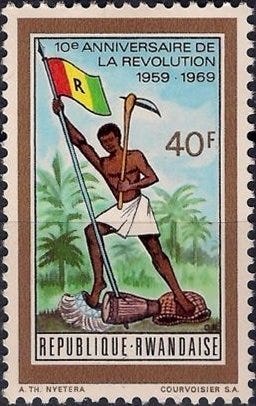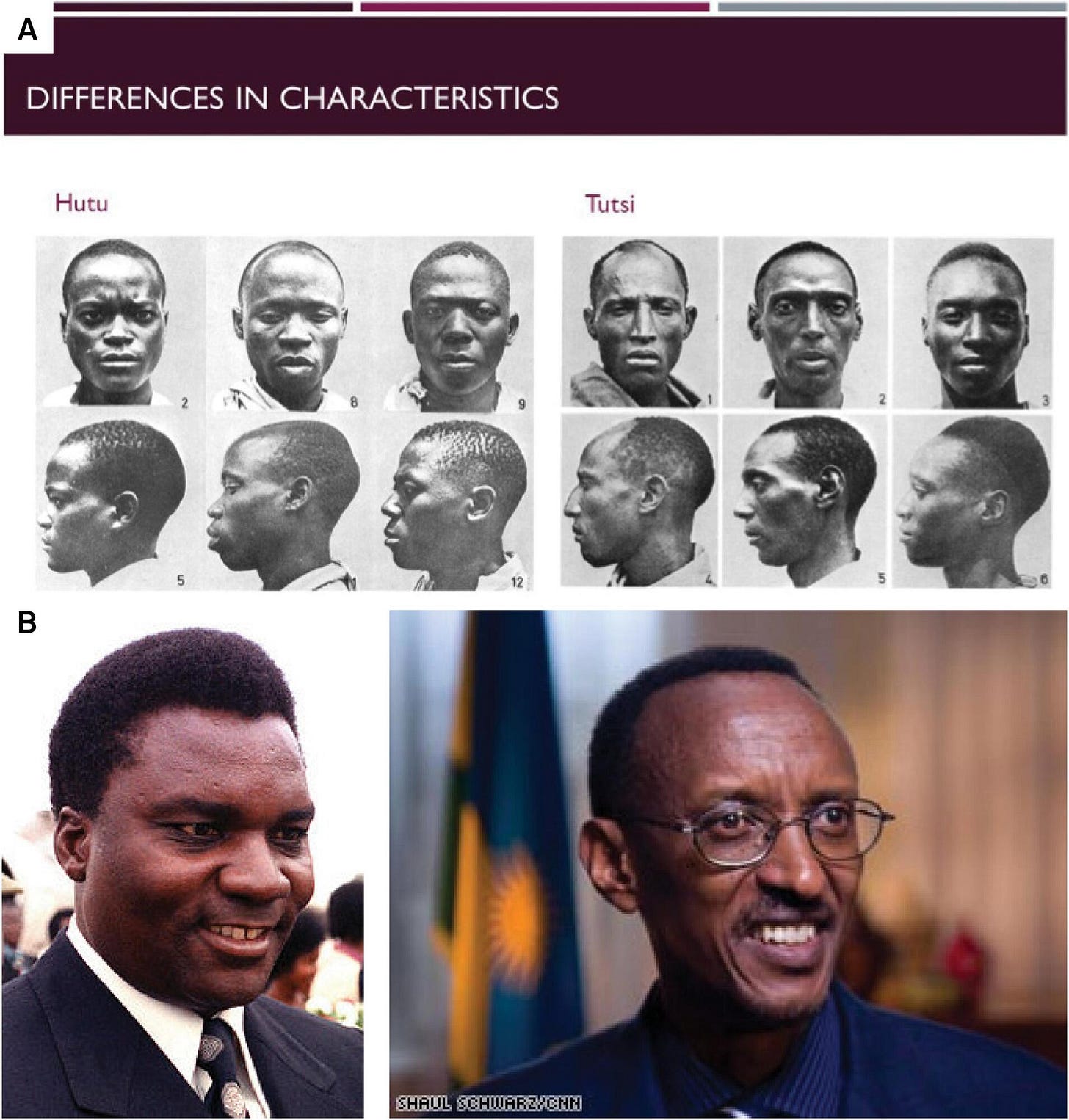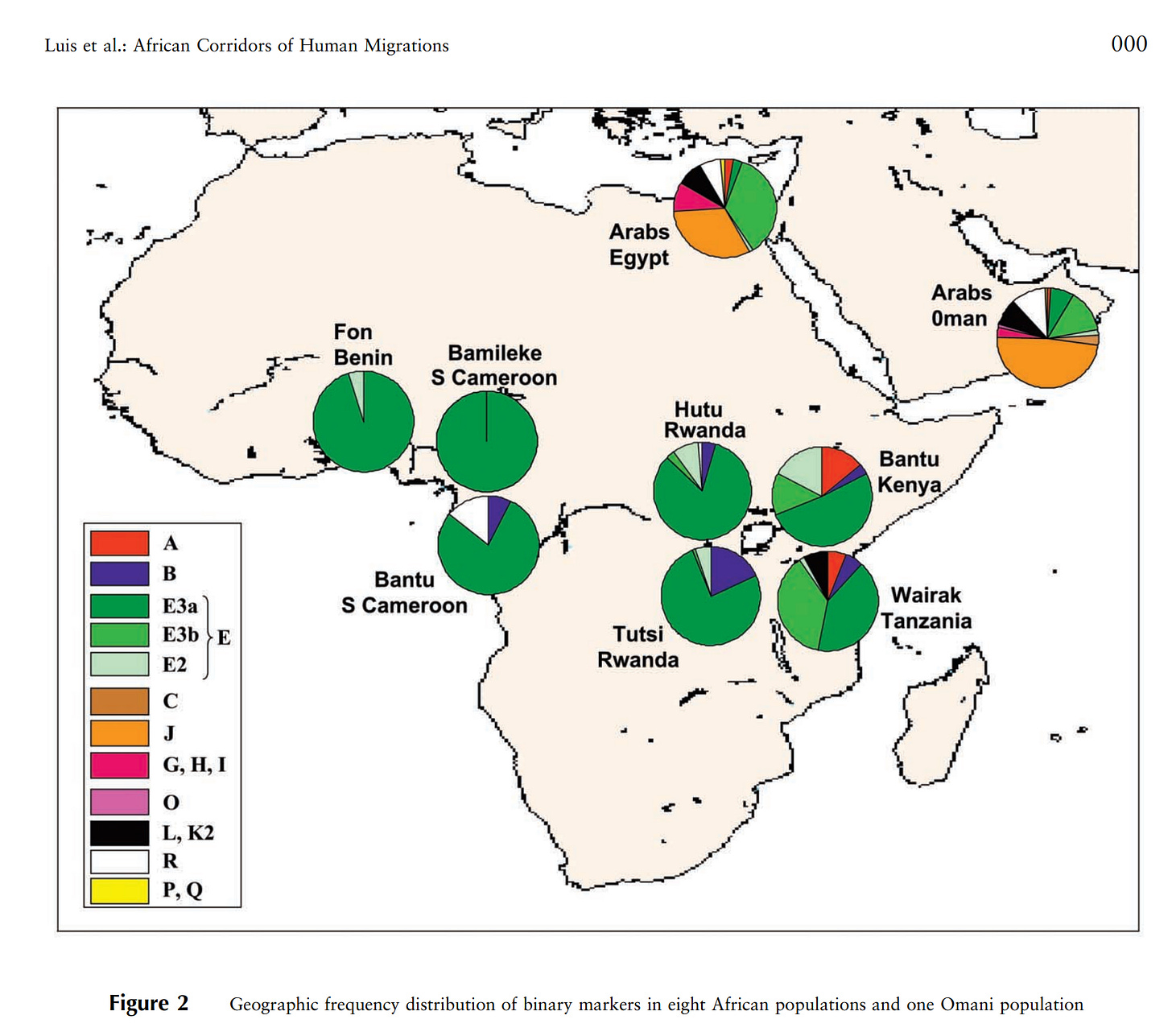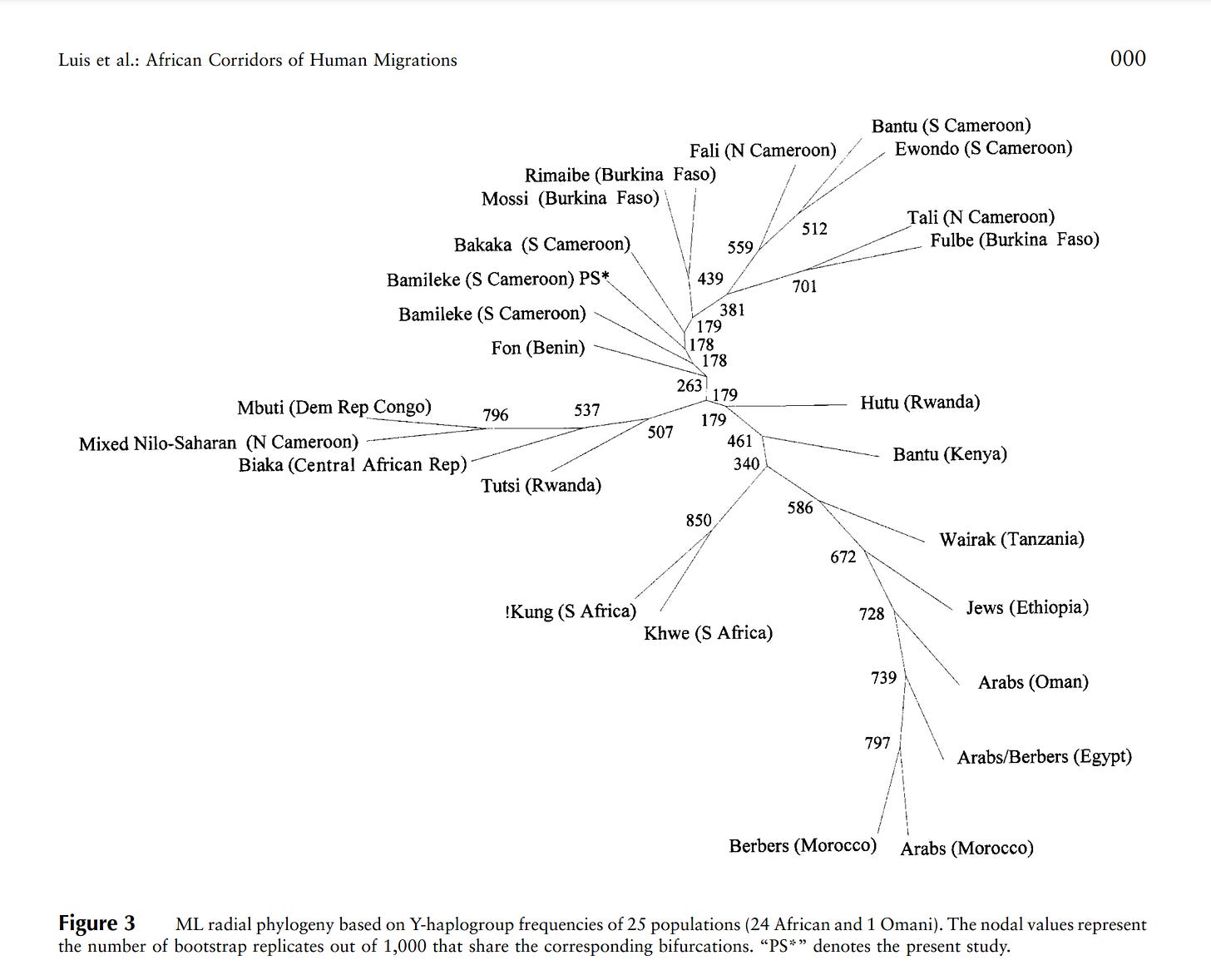Famously, there was a genocide in Rwanda in the 1994. The mainstream story per Wikipedia is something like:
The Rwandan genocide, also known as the genocide against the Tutsi, occurred from 7 April to 19 July 1994 during the Rwandan Civil War.[4] Over a span of around 100 days, members of the Tutsi ethnic group, as well as some moderate Hutu and Twa, were systematically killed by Hutu militias. While the Rwandan Constitution states that over 1 million people were killed, most scholarly estimates suggest between 500,000 and 662,000 Tutsi died, mostly men.[5][6][7] The genocide was marked by extreme violence, with victims often murdered by neighbors, and widespread sexual violence, with between 250,000 and 500,000 women raped.[8][3]
The genocide was rooted in long-standing ethnic tensions, exacerbated by the Rwandan Civil War, which began in 1990 when the Rwandan Patriotic Front (RPF), a predominantly Tutsi rebel group, invaded Rwanda from Uganda. The war reached a tentative peace with the Arusha Accords in 1993. However, the assassination of President Juvénal Habyarimana on 6 April 1994 ignited the genocide, as Hutu extremists used the power vacuum to target Tutsi and moderate Hutu leaders.[9]
Tutsis were a dominant minority who had ruled Rwanda since Europeans arrived:
The Rwandan Revolution, also known as the Hutu Revolution, Social Revolution, or Wind of Destruction[1] (Kinyarwanda: muyaga),[2] was a period of ethnic violence in Rwanda from 1959 to 1961 between the Hutu and the Tutsi, two of the three ethnic groups in Rwanda. The revolution saw the country transition from a Tutsi monarchy under Belgian colonial authority to an independent Hutu-dominated republic.
Rwanda had been ruled by a Tutsi monarchy since at least the 18th century, with entrenched pro-Tutsi and anti-Hutu policies. Germany and Belgium successively controlled Rwanda through the early 20th century, with both European nations ruling through the kings and perpetuating a pro-Tutsi policy. After 1945, a Hutu counter-elite developed, leading to the deterioration of relations between the groups. The Tutsi leadership agitated for speedy independence to cement their power, and the Hutu elite called for the transfer of power from Tutsi to Hutu, a stance increasingly supported by the Catholic Church and the colonial government.
...
Prior to the arrival of colonists, Rwanda had been ruled by a Tutsi-dominated monarchy since the 15th century. In 1897, Germany established a presence in Rwanda with the formation of an alliance with the king, beginning the colonial era.[17] Later, Belgium took control in 1916 during World War I. Both European nations ruled through the Rwandan king and perpetuated a pro-Tutsi policy.
In the neighboring country of Burundi, there was a mirror image of the same events:
Mass killings of Tutsis were conducted by the majority-Hutu populace in Burundi from 21 October to December 1993, under an eruption of ethnic animosity and riots following the assassination of Burundian President Melchior Ndadaye in an attempted coup d'état. The massacres took place in all provinces apart from Makamba and Bururi, and were primarily undertaken by Hutu peasants. At many points throughout, Tutsis took vengeance and initiated massacres in response.
The Ikiza (variously translated from Kirundi as the Catastrophe, the Great Calamity, and the Scourge), or the Ubwicanyi (Killings), was a series of mass killings—often characterised as a genocide—which were committed in Burundi in 1972 by the Tutsi-dominated army and government, primarily against educated and elite Hutus who lived in the country. Conservative estimates place the death toll of the event between 100,000 and 150,000 killed, while some estimates of the death toll go as high as 300,000.
So what we can gather from this is that these two ethnic groups had been in intermittent warfare for a long time across countries. Tutsis despite being a ~10% minority tend to end up in power. That calls for an explanation.
Some people have claimed these two ethnic groups do not in fact exist as natural divisions of humanity, but were invented or at least grossly exaggerated by European colonizers (the perpetual evildoer). An example:
Historians and sociologists have demonstrated that the Hutus and Tutsis are not members of separate tribes or races: they do not come from distinct territories, they speak the same language, and share the same culture and religious references. Nor is there a difference of caste, as intermarriage has always been common.
Anyway, European anthropologists were also interested in this question, and before anthropology became mostly a left-wing front, they did some research on Hutus and Tutsis. Wikipedia does have a summary of this older research plus some modern genetic research. Europeans were at the time very interested in doing real anthropology so they did research like this (2018 Phrenology and the Rwandan Genocide):
In a text book from 1987 the Tutsi population was presented as follows: “They are lean and tall (their average body height is 1.79m).”
So Tutsis are taller, a dominant minority and this was true for 100s of years. So sure sounds like they are different ethnic groups. However, the more clever anti-realists say that Tutsis and Hutus are social groups which due to nutritional differences also differed in height. We know that nutrition can have a large impact of heights of peoples, so this is not entirely implausible. However, there is another piece of evidence that is hard to dismiss (1974 study, and another earlier one):
In order to investigate the ethnic differences of lactose intolerance in the Bantu and Hamitic races, lactose loading tests were performed on the populations living around Kivu Lake in central Africa. In addition to the blood sugar rise the identification of the urinary sugars after the loading test was found to be a useful criterion for the diagnosis of lactose intolerance. Two out of 27 Tutsi (7.8%), 21 out of 36 Hutu (58%), 17 out of 22 Twa (77%), and 27 out of 28 Shi (96%) were lactose intolerant. These frequencies are not linked with the actual milk-drinking habits. Of 3 Twa families, 2 were mostly lactose intolerant, whereas the third was predominantly tolerant. For 11 mixed-bred Hutu-Tutsi the frequency of lactose intolerance was 55%. The results are in favor of a genetic origin of lactose intolerance.
Lactose tolerance does not exist in hunter gatherers, but exists in pastoralists and some farmers. It takes a while to evolve and spread in a population, and it's not plausible that mere social class distinctions could result in such a large gap in lactose tolerance. Thus, the ethnic differences between Hutus and Tutsis must be quite old, and probably relate to Tutsis having pastoralist admixture, whereas the Hutus are more purely of recent Bantu origin. In terms of more modern genetics studies, I will copy from the prior post so it is also easily available here:
It is pretty difficult to find any genetic studies that look at this question, but I found (on Wikipedia) one paper where the supplementary files have a frequency table of haplogroups:
They didn't include all haplogroups in their table (rows don't sum to 100), but 22.2% (so 2/9) of the Tutsis had E-M293*, while 0 of the 14 Hutus did. As far as I can tell, this produces a p value of 0.4 (Chi Sq.), which is thus inconclusive given the sample sizes. Tischkoff 2009 also had data from Tutsi and Hutu, but only 6 people and they are not labelled separately in their public dataset (sad!). However, there is a final paper by Luis et al 2004, which has better data: 69 Hutus and 94 Tutsis. They computed fractions of some haplogroups:
The B clade is more common in Tutsis than Hutus. Specifically, 4/69 and 15/94. This produces p = 0.08 with Chi Sq. Unsatisfactory again, but in the same direction as before. Perhaps if one combined all the frequency differences one could obtain a smaller p value. The authors produced this dendrogram:
Sure enough, the Hutus and Tutsis are on different branches.
There is a final piece of the puzzle. Let's talk about ancient genomics. Remember this result from Reich lab's recent study?
The key result is that the red circles are the European hunter-gatherers, green dots are Anatolian farmers, and blue dots are Yamnaya/Indo-European pastoralists. Thus, we can note that HGs are less bright than farmers and postoralists. If we dare generalize from this European result to elsewhere, we would expect the Tutsis, being (more) postoralists (lactose tolerant) would be smarter than the Hutus, who are part of the Bantu expansion, who were until recently hunter gatherers. Granted, Tutsis also have Bantu admixture, but Tutsis have less of it, so more of postoralist admixture. It is a matter of degree, but this would lead us to speculate that Tutsis have some intelligence advantage. Recall that despite being 10% of the population in two different countries, they have been a ruling elite for most of the last 500+ years. How could this be achieved if not for a human capital advantage? This model makes some predictions:
Genomic data will show an advantage in the relevant polygenic scores for Tutsis (height, intelligence). As far as I know, there are no public datasets of Tutsi and Hutus from Burundi or Rwanda. Almost all the academic studies concern genomic analyses of various viruses and diseases (HIV, SARS-2).
Intelligence testing will show a Tutsi advantage. Becker's compilation (v1.3.5) does not have any studies for either country.
Cranium measures will show a Tutsi advantage in volume and thus brain size. I tried asking Grok to look through the older anthropological studies (they did some cranium measures, but mainly related to shape: Tutsis have elongated skulls compared to Hutus).
I look forward to getting data to examine these predictions.








I was thinking about this a little while back, as in school I was taught that the Germans and Belgians invented these ethnic groups, but I later realized that you can pretty clearly see that Hutus look more Bantu and Tutsis look more similar to someone you might see in Ethiopia. There is detailed raw data from Demographic and Health Surveys available for Rwanda and many other countries (https://dhsprogram.com/methodology/survey-search.cfm?pgtype=main&SrvyTp=country), but unfortunately with the shuttering of USAID, they are no longer responding to account creation requests. People with accounts can still access data, though, so perhaps you can find a way to get it. It obviously wouldn't include genetic data or address the causality of any differences, but it would likely be a way to examine the magnitude of phenotypic differences in SES, education, height, and possibly many other interesting traits. The write-ups are still available, and perhaps unsurprisingly, the 1992 report mentions Hutus, Tutsis, and Twas, but those words are absent from the 2000 report.
Interesting article. I agree with the overall conclusions, but I do not think it is accurate to say that the Bantu (I.e. Hutu) were hunters gatherers until recently. The reason for the Bantu migrations was likely their agriculture (and iron-making). It was the previous Khoisan people who were hunters gatherers. The Khoisan were largely pushed out by the Bantu because of their superior technology and larger populations.